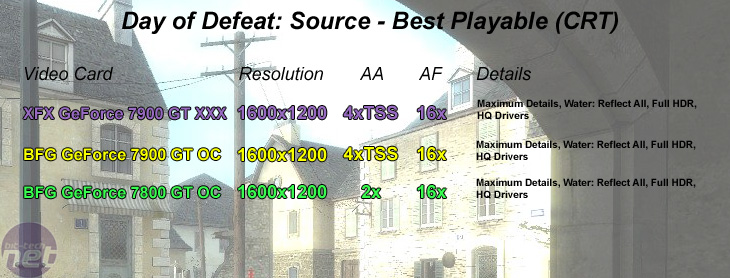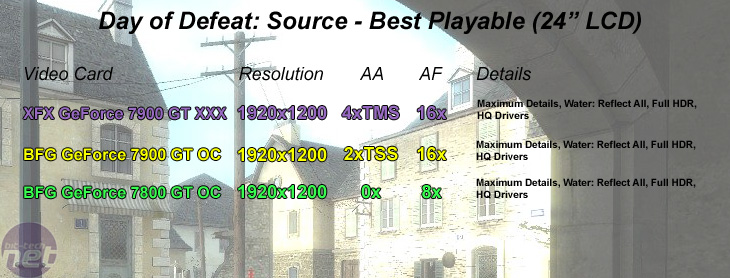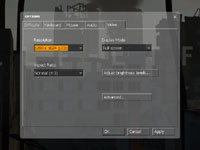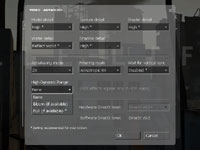Day of Defeat: Source
Publisher: ValveWe used the popular remake of the World War II online multiplayer, Day of Defeat: Source, which uses Valve's implementation of high-dynamic range rendering. We did three five minute portions of real world game play on the dod_anzio map. We connected to three different public servers each with a ping of less than 30ms and 16-20 players in the game when we were recording the frame rates.
Anti-Aliasing and Anisotropic Filtering were controlled from inside the game, and thus the drivers were left set to "Application Controlled". There are three options for the method of HDR used in this title. You can either disable HDR completely, make use of "Bloom" which is just what it says and less resource hungry in comparison to "Full" which, again is just what it says. It utilises a full dynamic range with the iris effect too.
We have written quite a bit about Half-Life 2: Lost Coast, Day of Defeat: Source and how Valve have implemented HDR in to the Source Engine. You can check out the articles listed below for more information on The Lost Coast & Day of Defeat: Source.
- Half-Life 2: Lost Coast HDR overview
- Half-Life 2: Lost Coast hands on
- Half-Life 2: Lost Coast Benchmarks & Video
- Day of Defeat: Source
- Cinematic Effects in Source
CRT gaming:


The BFG Tech 7900 GT OC still delivered a smooth gaming experience, and was perfectly playable, but the frame rate did drop below 30 frames per second on the odd occasion. Meanwhile, the BFG Tech 7800 GT OC was playable with 2xAA 16xAF and maximum in-game details. The minimum frame rate was lower than what was recorded on BFG's 7900 GT OC, but the average frame rate was slightly higher.
Widescreen LCD gaming:


The BFG Tech 7900 GT OC was not particularly smooth with 4x transparency multisampling AA enabled, so we settled for 2x transparency supersampling AA at 1920x1200 with maximum in-game details. The 7800 GT OC was unable to play this game smoothly with antialiasing enabled at the native resolution. There were times when the frame rate dropped lower than what we'd say was completely smooth, but the frame rate stayed relatively acceptable - the hitches weren't too common. If you're running a slower GeForce 7800 GT, you'll find that lowering the water detail will help to remove the hitches.

MSI MPG Velox 100R Chassis Review
October 14 2021 | 15:04









Want to comment? Please log in.